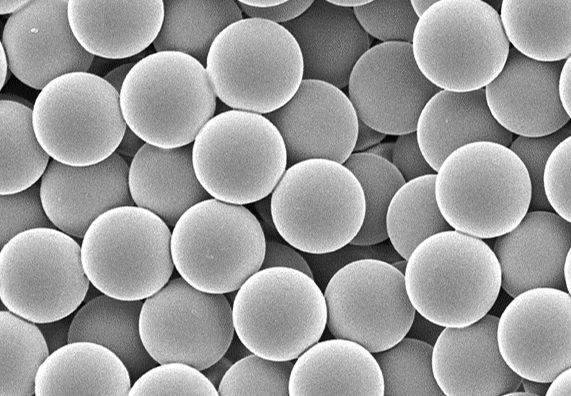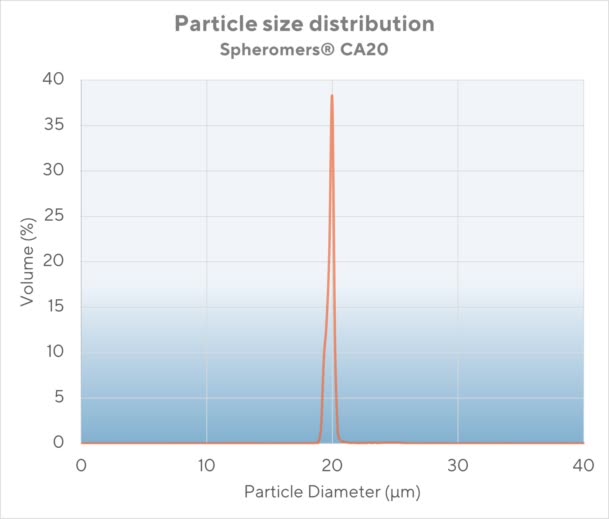Matting & Gloss Control
Discover more
Lamberti Corporate
If you have seen one you have seen them all

Spheromers® are acrylic microbeads with an extremely narrow particle size distribution. The unique manufacturing process allows for narrow particle size distribution directly from the reactor, at industrial scale. Spheromers® are perfectly spherical beads made of crosslinked polymethyl methacrylate (PMMA), with exceptionally homogeneous properties and batch reproducibility.
Spheromers® are available at different grades, with particle diameter ranging from 6 µm to 60 µm. The Coefficient of Variation (CV) of the main peak is typically between 1 – 3 %. For an overview of the different Spheromers® products, click here.

Key properties of Spheromers® include
Being monosized, Spheromers® provide the opportunity to tailor performance of your material, whether that is a coating, a plastic, an adhesive, or something completely different. Take advantage of the extremely narrow size distribution to control thickness, or utilize the homogeneous properties to provide predictable, consistent results.
Learn more about the Monosized Technology here.
Lamberti Corporate